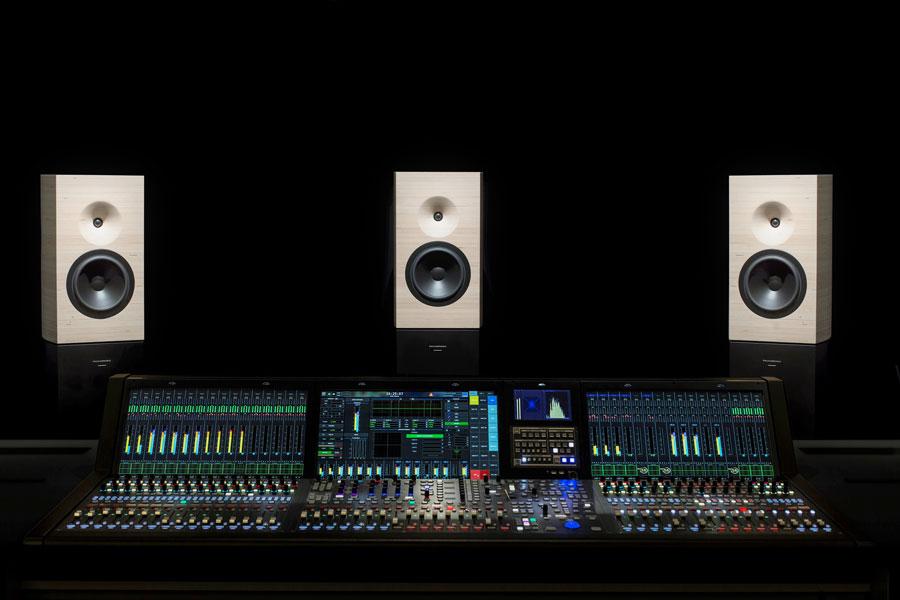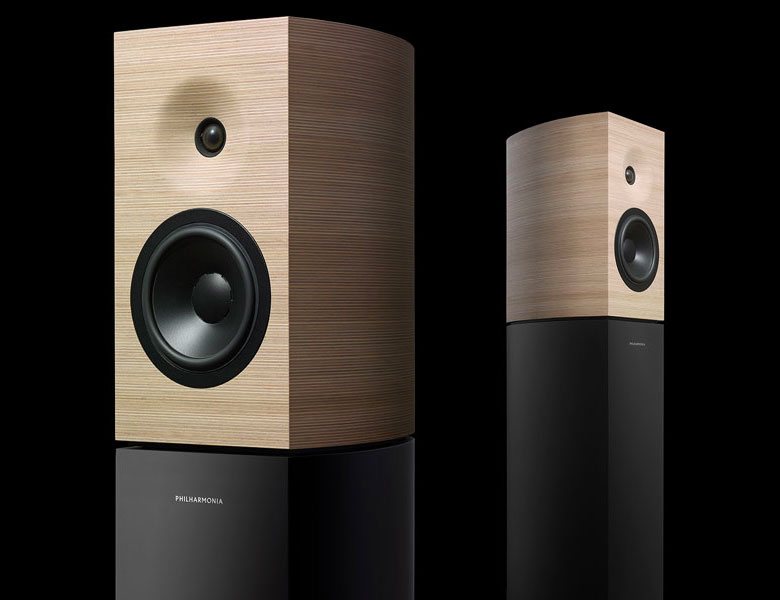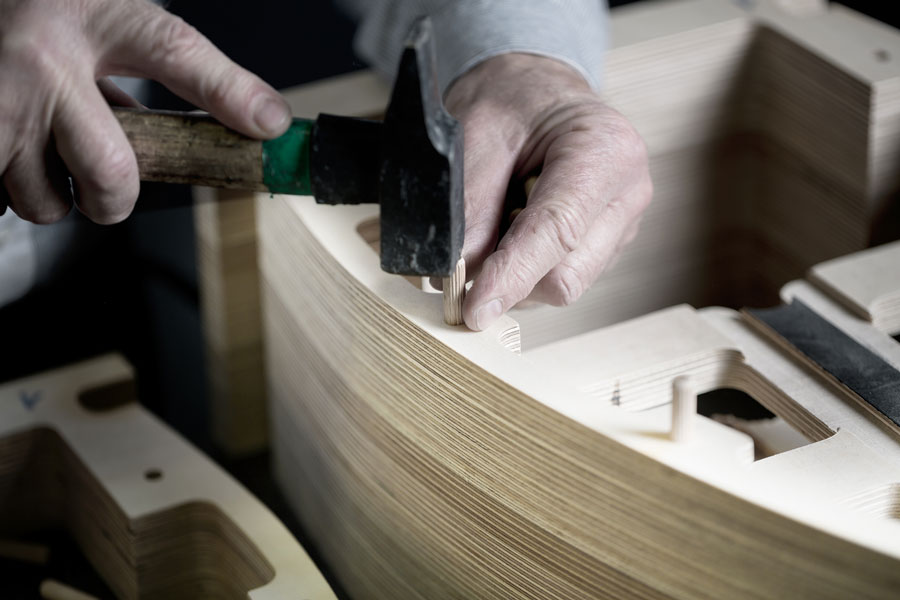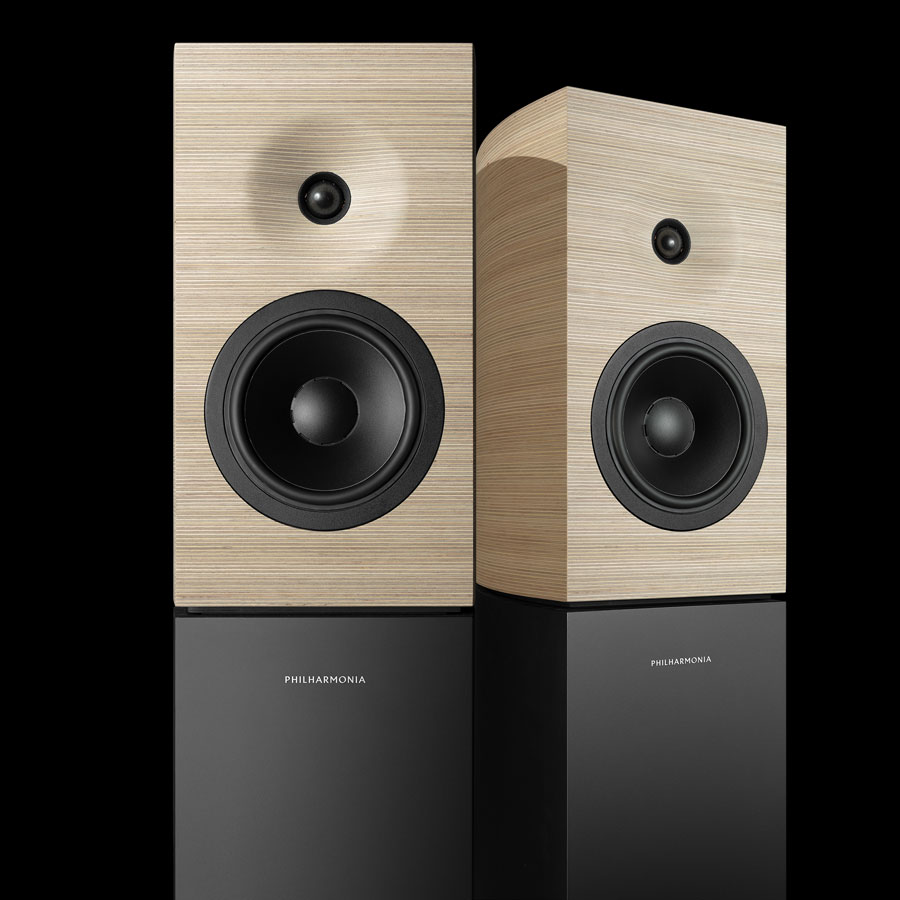Amadeus have announced they are now shipping the new Philharmonia Mini passive speakers, co-designed specifically for the Hi-Fi market by world-renowned architect Jean Nouvel. Amadeus unveiled the Philharmonia Mini at the High End Music trade show in Munich, Germany.
The band-new passive speaker design is based on the Amadeus’ top-of-the line Philharmonia powered speakers, which were initially created specifically for the Philharmonie de Paris recording and mastering studios.
“The sonic philosophy of the Philharmonia Mini is inherited from the initial model, Philharmonia, which has been our ultimate reference throughout the development process,” said Michel Deluc, Director of Research & Development for Amadeus.
The Philharmonia Mini was born from the prestigious legacy of Amadeus’ success in the professional audio world over the last 25 years. Amadeus’ users include the greatest sound engineers, mixers and producers in France and throughout the world.

“The original Philharmonia-first released in 2015 and created from our collaboration with Jean Nouvel and the Philharmonie de Paris-has touched, charmed, and surprised many music lovers over the last few years,” adds Gaetan Byk, Marketing Manager at Amadeus.
“The Philharmonia Mini is a form of response by Amadeus and Jean Nouvel to requests from our customers, users, and partners from the consumer world. Extending the brand and therefore the Philharmonia range was necessary. We had to offer a more compact version, more discreet, less pricey and non-powered and not digitally-managed, incorporating a state-of-the-art passive filtering section, all without distorting the shape, finish and construction technique imagined by Jean Nouvel,” states Byk.

“Designing a passive speaker allows the installer the use of a wide choice of peripherals (converters, preamps, processors, amplifiers, and more) as a complement and not necessarily dedicated to this model” states Michel Deluc.
The new Philharmonia Mini speaker design features a curved structure that is both simple and complex, consisting of 288 wood veneers accurately machined, aligned and glued, offering a distinctive look and volume.
The speaker in itself (resonance volume) features a 432mm height with a 353mm depth. The cabinets are custom manufactured from layered Birch and stand 1.23 meters tall. The speaker enclosure features a unique hybrid laminar port using progressive termination inspired by the original Philharmonia.

Machined into the wood material along the full height of the speaker system, the very low velocity port yields optimal linearity for the lowest possible distortion, giving a frequency response down to 44 Hz (@ – 6 dB) without any additional correction.
“The distinctive construction technique helps neutralize standing waves affecting sonic clarity and low-frequency definition through an extremely complex internal structure using a combination of interlocking panels arranged in two perpendicular planes, each hosting several tuned notch resonators. This allows a dramatic decrease in sound coloration through a crossed structure of longitudinal and trans-verse reinforcements,” reveals Deluc.
The Philharmonia Mini 2-way, passive speakers feature the original Philharmonia’ 28-mm soft-domed tweeter and a custom 170-mm woofer, for an amplitude linearity range (±2dB) from 54 Hz to 22 kHz, and a cut-off frequency (-6dB) of 44 Hz. The high-frequency driver features very low dielectric losses and high thermal conductivity, loaded behind a fast exponential waveguide machined in wood, which yields exceptional control over spatial dispersion.

The first millimeters of the horn have been carefully taken care of. To achieve a perfect precision,it has been made out of Corian, a composite material with a mix of mineral filters and acrylic resin.
The pedestal contains the passive components inside the lower part of the speaker enclosure, including the custom Amadeus-designed passive crossover. The outstanding sonic performance of the resistors, capacitors and inductors is achieved through a unique combination of advanced technologies, meticulously researched.

“Achieving such a linear response without active components -and digital correction-created an enormous amount of work on the design of the enclosures’ internal structure, the hybrid laminar port, and the waveguide expansion,” states Deluc
“The passive filter design philosophy matches the aesthetic of the speaker. It is very minimalist. The passive crossover features a subtle combination of two different orders, inducing an absolutely perfect phase summation between the two speakers, and an excellent impulse response.” concludes Michel Deluc.
The rear panel of the pedestal features a pair of beautifully finished, top-quality binding posts from Japan-based manufacturer FURUTECH. These carbon-finished binding posts feature rhodium-plated conductors that are the result of meticulous engineering and careful auditioning of various suitable materials. The FT-816 (R) features a pure copper conductor material for minimal impedance, extremely non-resonant carbon fiber, non-magnetic stainless steel, and eutectic copper alloy housings.
Specifications :
- Transducer (HF): Ø 28 mm soft dome
- Transducer (LMF): Ø 170 mm bass driver
- Recommended Power: 50 – 300W/8Ω
- Amplitude linearity (±2dB): 54 Hz – 22 kHz
- Cut-off frequency (-6dB): 44 Hz
- Peak SPL 1-meter (Pair, IEC Short Term): 118 dB peak
- Peak SPL 1-meter (IEC Short Term): 112 dB peak
- Sensitivity (2.83V/1m): 90 dB
For more info or to organise a hearing test with your local distributor, contact Amadeus à [email protected] or visit the Philarmonia Paris Website








